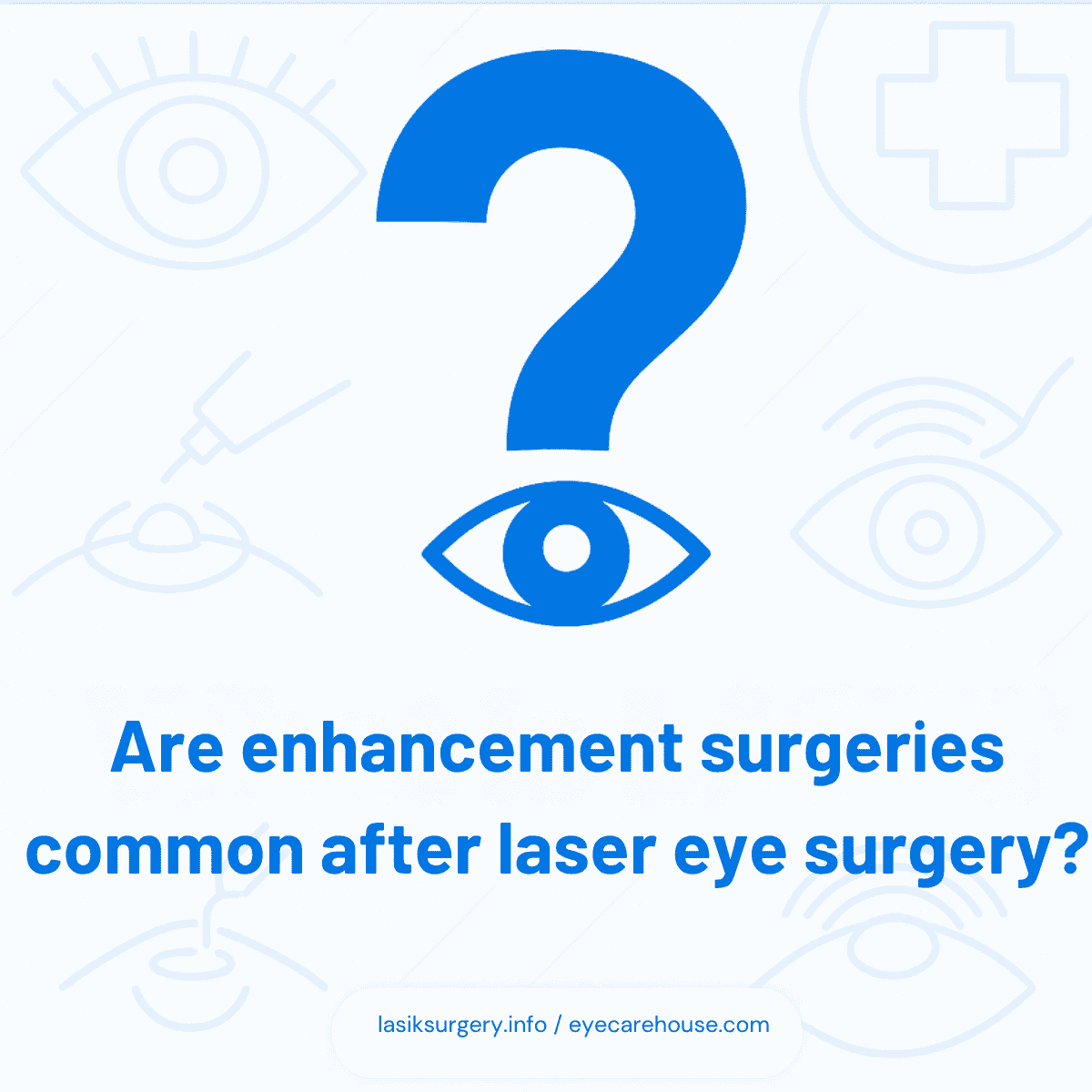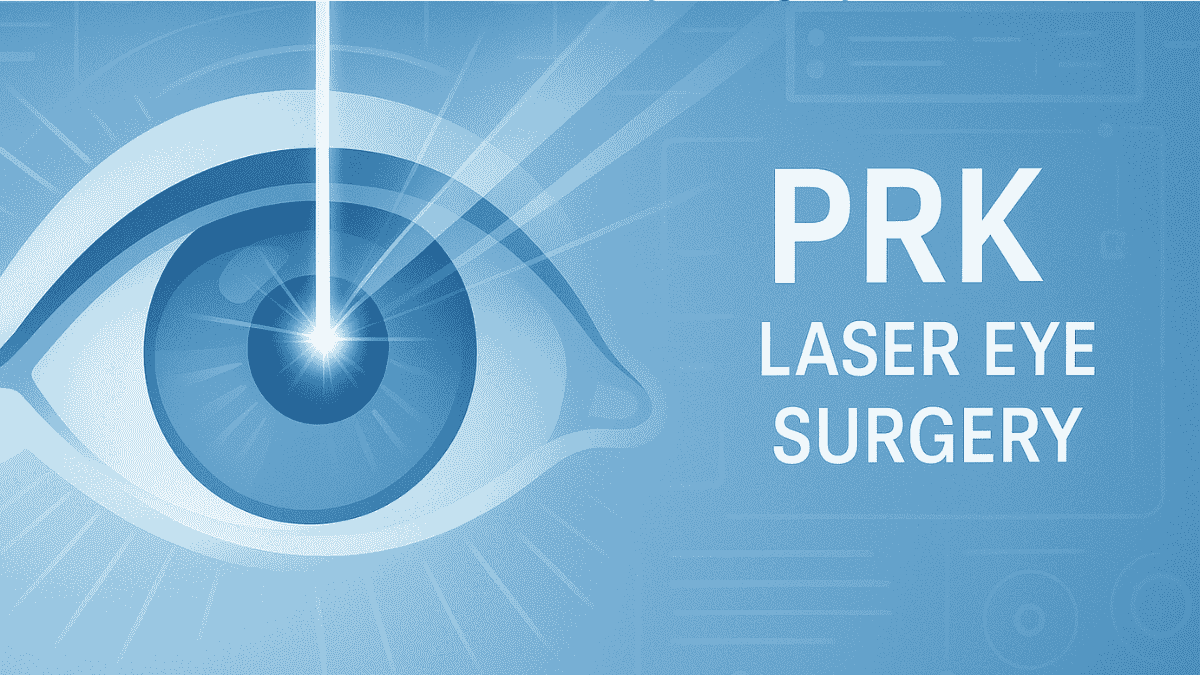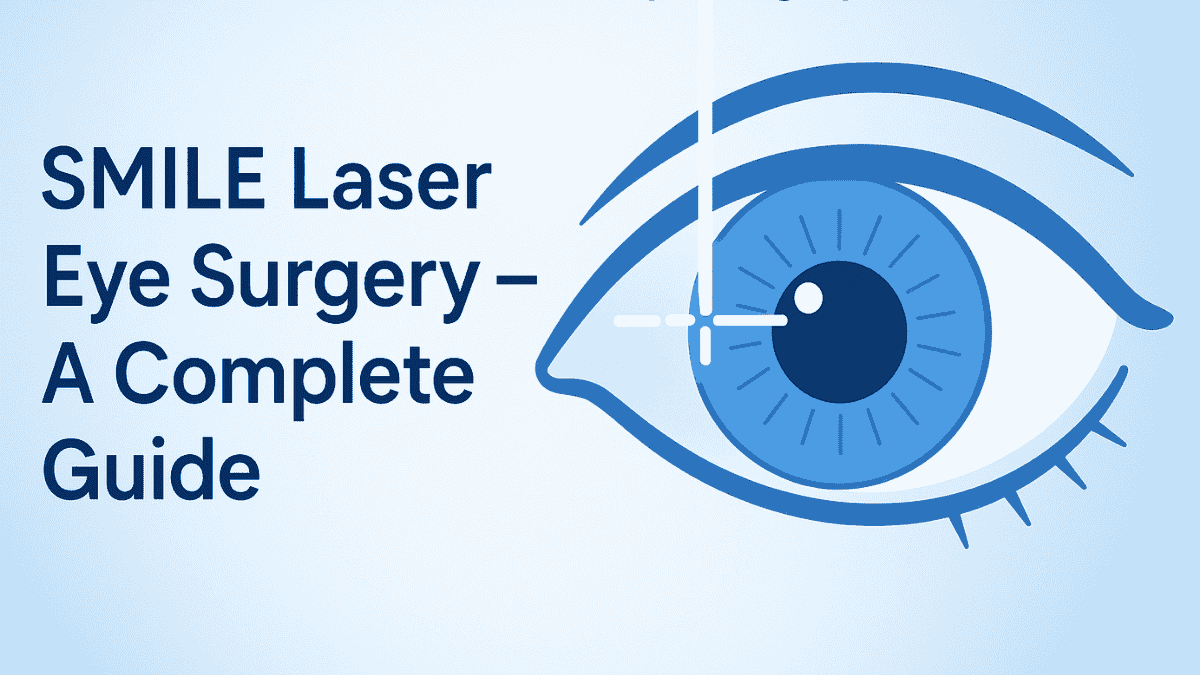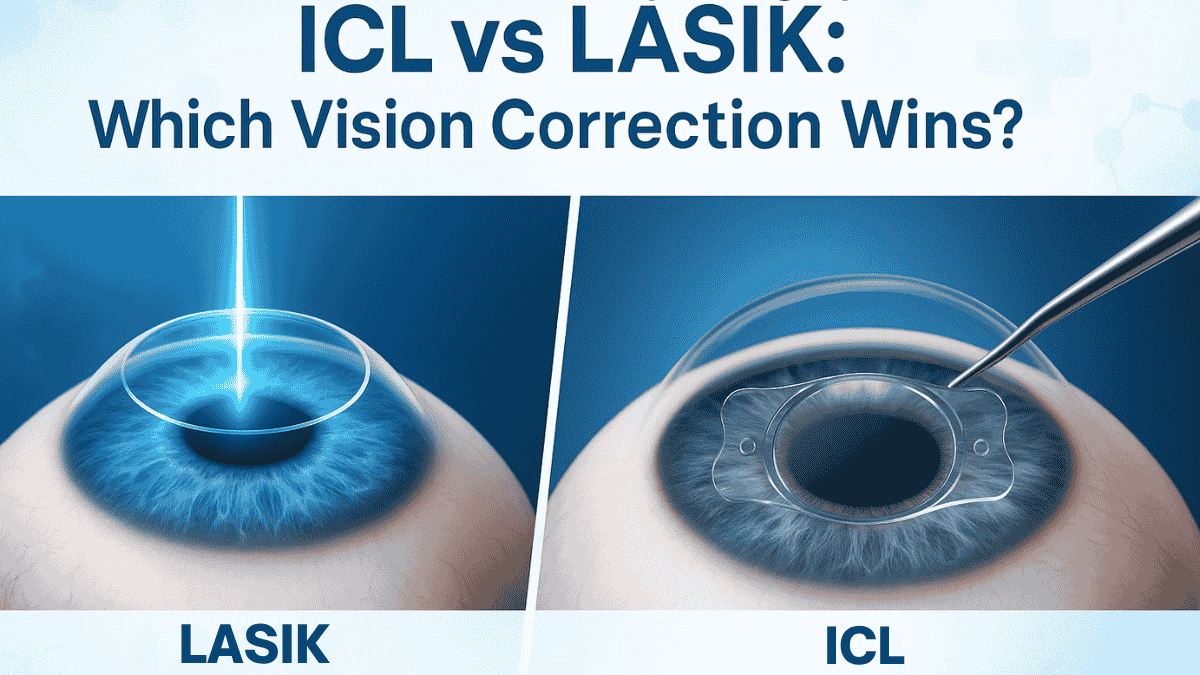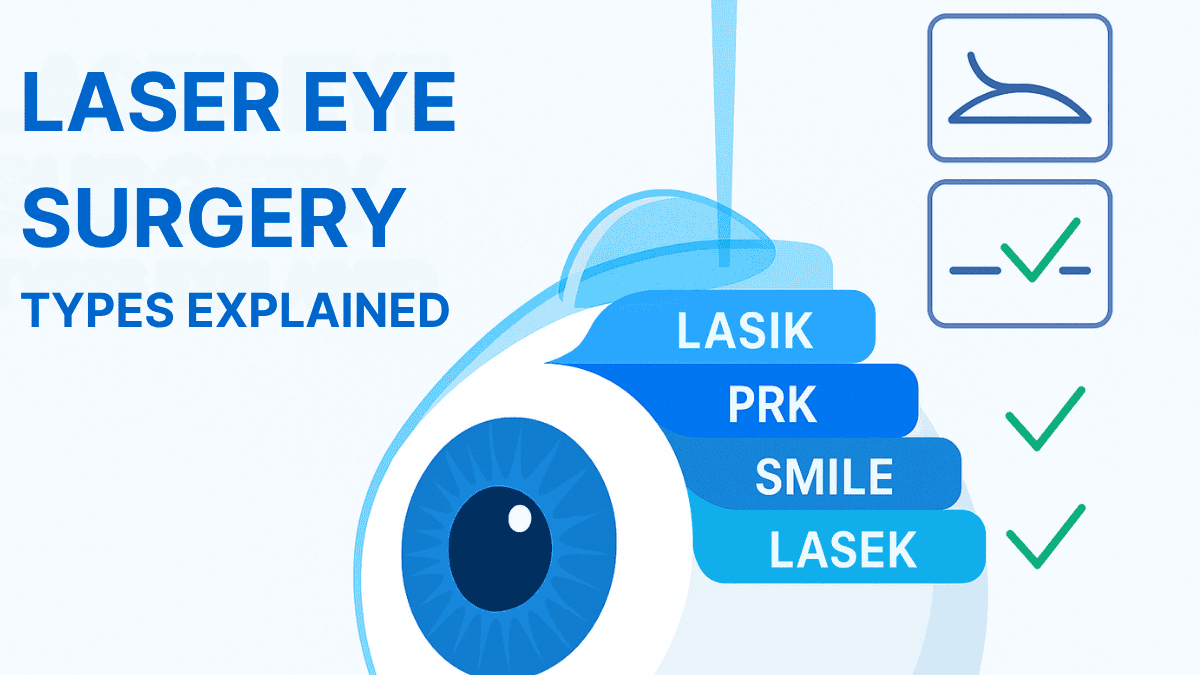
Types Of Laser Eye Surgery
Considering laser eye surgery? You’re not alone. Millions of people worldwide have turned to this life-changing procedure to ditch their glasses and contact lenses. But did you know there’s more than one type of laser eye surgery? Let’s explore the different options available to help you make an informed decision about your vision correction journey and overall eye health. In this content, we will examine the types of laser eye surgery.
Table of Contents
LASIK: The Gold Standard of Laser Eye Surgery
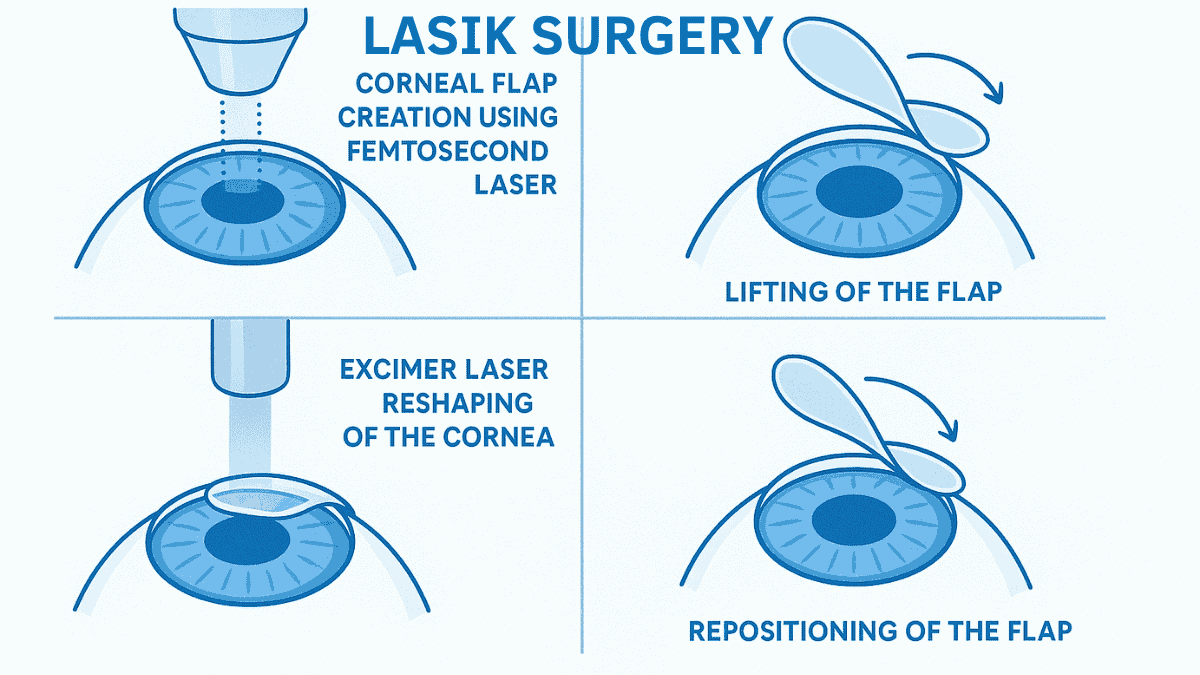
When most people think of laser eye surgery, LASIK often comes to mind. It stands for Laser-Assisted In Situ Keratomileusis and is the most common type of laser vision correction performed globally. This particular eye surgery technique has a long track record of success.
During the LASIK procedure, an eye surgeon creates a very thin, hinged flap in the cornea, the clear front surface of the eye. This flap created is typically made using a highly precise femtosecond laser. The surgeon then gently lifts this flap to access the underlying corneal tissue, which is then reshaped using an excimer laser to correct the refractive error responsible for vision problems.
LASIK is renowned for offering rapid visual recovery and minimal discomfort for most patients. Many individuals report significantly improved vision within 24 to 48 hours after the surgery performed. It’s a versatile option suitable for correcting a wide range of prescriptions, including nearsightedness, farsightedness, and astigmatism, contributing to its high success rate.
Post-operative care typically involves using prescribed eye drops to prevent infection and reduce inflammation. While the initial vision might be slightly hazy or show blurred vision, this usually clears up quickly, leading to a very satisfactory visual result for many. Because of its effectiveness and quick healing time, LASIK surgery remains a popular choice for vision correction.
PRK: The Original Laser Eye Surgery
Photorefractive Keratectomy, or PRK, holds the distinction of being the original laser eye surgery. Developed before LASIK, this original laser eye surgery technique is still a widely used and excellent choice, especially for individuals who may not be ideal candidates for LASIK. PRK is a type of surface ablation procedure.
In the PRK eye surgery technique, the eye surgeon, instead of creating a corneal flap, gently removes the cornea’s thin, outer layer, known as the corneal epithelium. This process involves completely removing this outer layer, often with the assistance of an alcohol solution or a special brush. Once the underlying corneal tissue is exposed, an excimer laser is used to precisely reshape the cornea, correcting the refractive error.
A soft bandage contact lens is typically placed on the eye treated after the procedure to protect the surface while the corneal epithelium regenerates, which usually takes three to five days. The healing time for PRK is generally longer compared to LASIK, with visual recovery being more gradual. However, PRK offers distinct advantages for certain patients, such as those with thinner corneas or individuals with lifestyles or occupations that carry a higher risk of eye injury, as it eliminates any risk of flap-related complications.
SMILE: The New Kid on the Block
SMILE, which stands for Small Incision Lenticule Extraction, often referred to as ReLEx SMILE, is one of the latest advancements in laser vision correction. This surgery technique is rapidly gaining popularity due to its minimally invasive nature and excellent outcomes. It represents a significant evolution in how refractive errors can be corrected.
During the SMILE procedure, a highly precise femtosecond laser is used to create a small, lens-shaped piece of tissue, called a lenticule, within the substance of the cornea. The same laser then creates a tiny mm incision, typically only 2 to 4 millimeters wide, on the corneal surface. The surgeon then carefully removes the pre-shaped lenticule through this small incision, and this removal changes the cornea’s shape, thereby correcting the vision.
SMILE offers a quick recovery time, often comparable to LASIK, and is associated with a potentially lower incidence of post-operative dry eye symptoms because it involves minimal disruption to the corneal nerves. Currently, SMILE is primarily approved for treating nearsightedness and astigmatism. A key difference from LASIK is that no flap is created during SMILE.
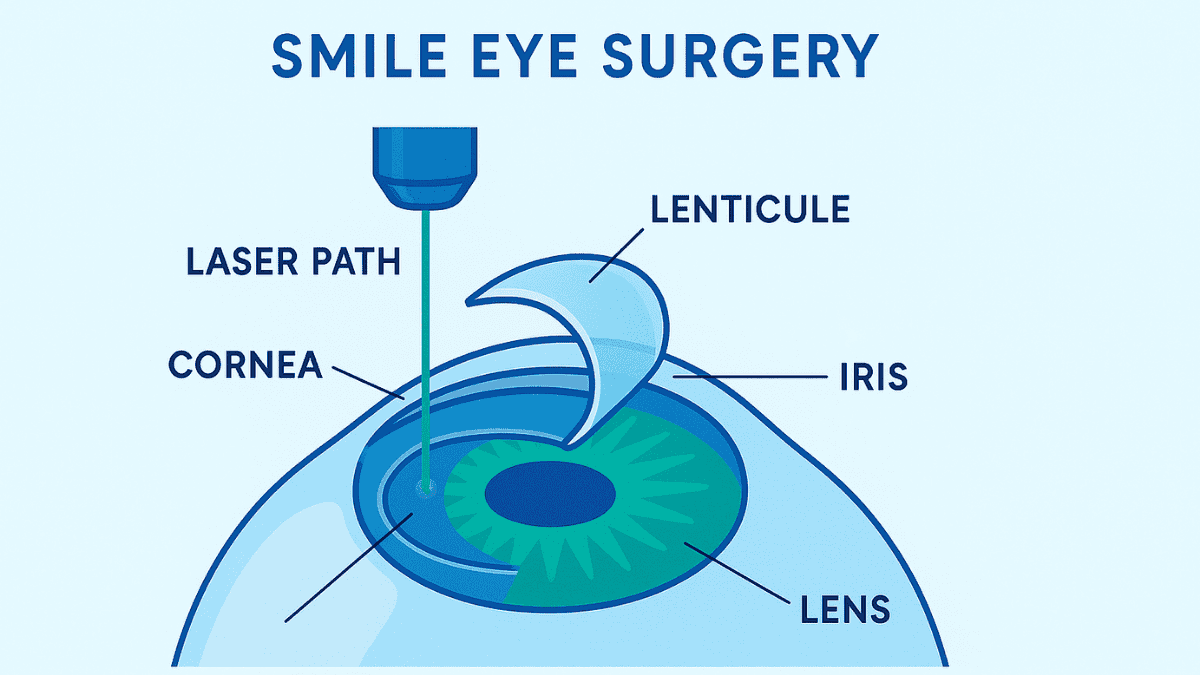
LASEK: A Hybrid Approach
LASEK, or Laser Epithelial Keratomileusis, is a LASEK surgery that blends elements from both LASIK and PRK. It’s often considered a suitable option for patients who have thin corneas or other factors that might make them less ideal for LASIK. This laser eye surgery technique provides an alternative when a corneal flap is less desirable.
In the LASEK procedure, the surgeon uses a dilute alcohol solution to gently loosen the outermost layer of the cornea, the corneal epithelium. This creates a very thin sheet of epithelial cells, which is then carefully moved to the side, much like a flap, but consisting only of the epithelium. After the underlying corneal tissue is reshaped with an excimer laser, this epithelial sheet is repositioned over the treated area, and a bandage contact is placed to aid healing.
The healing time for LASEK is typically longer than LASIK but can be shorter than traditional PRK for some individuals. It aims to reduce discomfort compared to PRK while still avoiding the creation of a deeper corneal flap like in LASIK, thus minimizing flap-related risks. Proper eye care and use of eye drops are important during the visual recovery period.
Epi-LASIK: A Variation on LASEK
Epi-LASIK is another surface ablation procedure that shares similarities with LASEK but differs in how the epithelial layer is managed. This eye surgery is also an option for individuals with thin corneas or those who prefer to avoid a traditional LASIK flap. It is one of the many refractive surgeries available.
Instead of using an alcohol solution to loosen the corneal epithelium as in LASEK, the Epi-LASIK technique involves using a specialized mechanical device called an epikeratome. This instrument carefully separates the epithelial sheet from the underlying corneal layer. After the excimer laser reshapes the cornea, the epithelial sheet is repositioned, similar to LASEK, or sometimes removed like in PRK.
This mechanical separation aims to create a cleaner separation of the epithelium, potentially leading to faster or more comfortable healing for some patients compared to LASEK. Like other surface ablation procedures, a bandage contact lens is used to protect the eye and promote healing. The visual result can be excellent once the eye has fully recovered.
Refractive Lens Exchange (RLE): Beyond Laser Surgery
While not strictly a laser surgery that reshapes the cornea, Refractive Lens Exchange (RLE) is an important vision correction option, often categorized under lens surgery or lens replacement. It is particularly beneficial for individuals who are not ideal candidates for corneal laser procedures. This includes those with very high degrees of farsightedness, presbyopia (age-related near vision loss), or early cataract changes.
In an RLE surgery performed, the eye surgeon removes the eye’s natural crystalline lens. This process is very similar to a modern cataract operation. Once the natural lens is removed, it is replaced with a sophisticated artificial lens, known as an intraocular lens (IOL), which is selected to correct the patient’s specific refractive error.
RLE can correct a much broader range of vision problems than corneal laser surgeries and can also prevent the future development of cataracts, as the natural lens that would become a cataract is removed. However, it is a more invasive procedure than LASIK or PRK, with a correspondingly longer visual recovery period. Discussion with an eye surgeon at an eye clinic will determine if this is the best path.
Following RLE, some patients may eventually develop a condition called posterior capsule opacification, where the membrane behind the artificial lens becomes cloudy. This can cause blurred vision but is easily treated with a quick, painless procedure called a YAG laser capsulotomy. This YAG laser treatment restores clear vision by creating an opening in the clouded posterior capsule.

Phakic Intraocular Lenses (pIOLs): Another Non-Laser Option
Phakic Intraocular Lenses (pIOLs) offer another innovative approach to vision correction, particularly for those who may not be suitable for laser eye surgery or RLE. Like RLE, this procedure involves the implantation of an artificial lens. However, a key difference is that the eye’s natural lens is left in place.
With pIOLs, a specially designed artificial lens is surgically inserted into the eye, either in front of the iris or between the iris and the natural lens. This implanted lens works in conjunction with the eye’s natural lens to focus light correctly onto the retina. This surgery technique is often an excellent choice for correcting very high degrees of nearsightedness that are beyond the treatment range of typical laser surgery.
A significant advantage of pIOLs is that the procedure is reversible; the implanted lens can be removed if necessary. Careful monitoring of eye pressure is an important part of post-operative eye care. These lenses can provide a high quality of vision and are a valuable option within the spectrum of refractive surgeries.
Choosing the Right Type of Laser Eye Surgery
With several effective types of laser eye surgery and other vision correction surgery procedures available, selecting the most appropriate one requires careful consideration. An experienced eye surgeon at a reputable eye clinic will conduct a comprehensive eye examination and discuss your individual needs. Here are some of the primary factors that will be evaluated:
- Your prescription: The type and degree of your refractive error (nearsightedness, farsightedness, astigmatism) are critical. For instance, SMILE is currently best for nearsightedness and astigmatism, while RLE might be better for very high hyperopia.
- Corneal thickness and shape: The thickness of your corneal tissue is a major determinant. Procedures like LASIK require a certain corneal thickness to safely create a flap, so PRK, LASEK, or SMILE might be recommended if your corneas are thin.
- Age: Your age influences options, especially concerning presbyopia. Younger patients might be ideal for LASIK, PRK or SMILE, while older patients experiencing presbyopia might consider RLE or monovision LASIK.
- Lifestyle and occupation: If you participate in contact sports or have a physically demanding job, a procedure without a corneal flap, such as PRK or SMILE, might be preferred to eliminate risks associated with a flap created during LASIK.
- Overall eye health: Pre-existing conditions like severe dry eye, glaucoma, or certain types of eye disease can affect candidacy or the choice of procedure. Conditions like diabetic eye disease or diabetic retinopathy need to be well-managed and stable before considering elective refractive surgery.
- Recovery time expectations: Different surgery procedures have varying healing time and visual recovery periods. LASIK often offers the quickest visual recovery, while PRK and LASEK typically take longer.
- Cost: The cost of different laser eye surgery techniques can vary. It’s important to discuss this with the eye clinic, understanding what is included in the price, such as follow-up care and any potential enhancements.
Your eye surgeon will consider all these aspects, along with your personal vision goals, to recommend the most suitable laser eye surgery technique for you. Sometimes, a combination approach like “LASIK PRK” comparison will be discussed based on individual eye characteristics. It’s essential that any procedure will result in a positive visual result for the eye treated.
Comparison of Common Laser Eye Surgeries
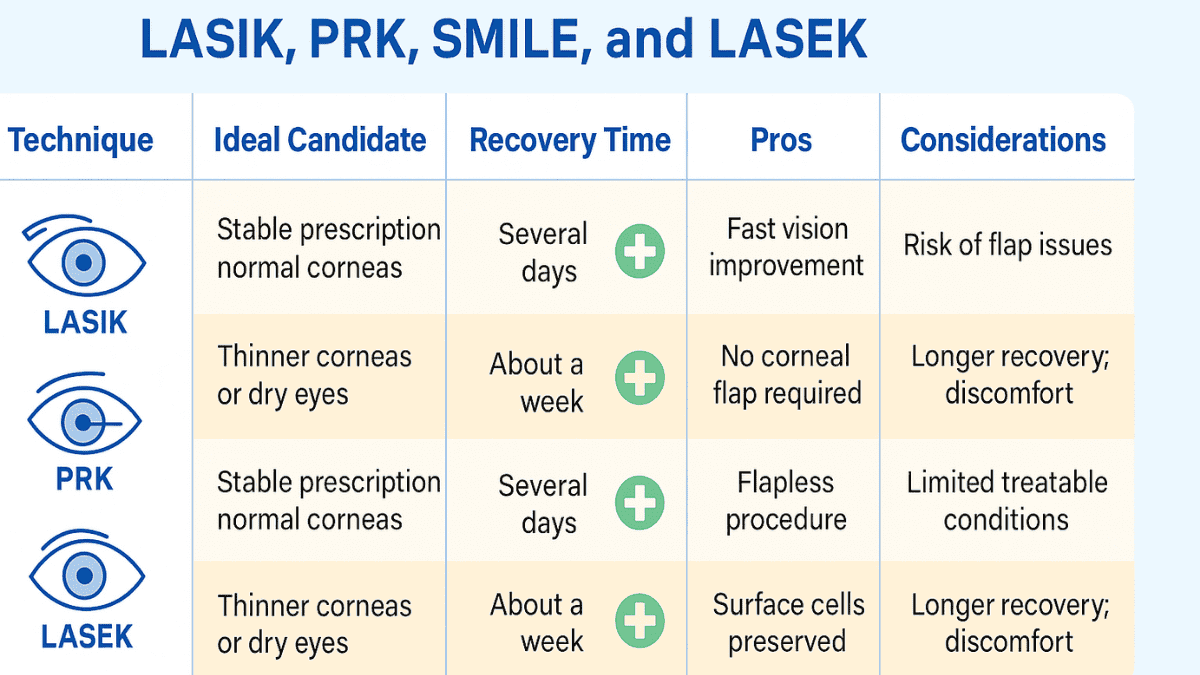
To help illustrate the differences, here’s a brief comparison:
| Procedure | How It Works | Often Good For | General Recovery Time | Key Benefit | Key Consideration |
|---|---|---|---|---|---|
| LASIK | Corneal flap created, excimer laser reshapes underlying tissue. | Wide range of myopia, hyperopia, astigmatism. | Very quick (1-2 days). | Fast visual recovery, minimal discomfort. | Requires sufficient corneal thickness; flap-related risks (rare). |
| PRK | Corneal epithelium completely removing, excimer laser reshapes surface. Original laser eye method. | Thinner corneas, active lifestyles. | Longer (several days for surface healing, weeks for full stabilization). | No flap risks, good for certain corneal conditions. | More discomfort initially, slower visual recovery. Requires bandage contact lens. |
| SMILE (ReLEx SMILE) | Femtosecond laser creates lenticule, removed via small mm incision. | Myopia, astigmatism. | Quick (similar to LASIK). | Minimally invasive, potentially less dry eye, no flap. | Not for hyperopia currently; specific surgeon expertise needed. |
| LASEK | Epithelium loosened with alcohol solution, moved aside, then replaced after laser. | Thin corneas. | Moderate (longer than LASIK, often shorter than PRK). | Avoids LASIK flap, may be less discomfort than PRK for some. Requires bandage contact. | Slower recovery than LASIK. Alcohol solution use. |
The Importance of Choosing a Skilled Surgeon
Regardless of which specific type of laser eye surgery or lens surgery you opt for, the experience and skill of your eye surgeon are paramount. You should look for a board-certified ophthalmologist who has extensive experience specifically in refractive surgery. A good surgeon is proficient in various surgery techniques.
Do not hesitate to ask about their experience with the particular laser eye surgery technique recommended for you, their success rates, and complication rates. Many reputable eye clinics offer a free laser consultation where you can discuss these matters. A trustworthy surgeon will be transparent about the potential visual result and openly answer all your questions regarding the surgery performed.
They should also explain the technology they use, such as the types of excimer lasers or femtosecond lasers, and how these contribute to the safety and precision of the procedure. Understanding the surgeon’s approach to eye care, both before and after the surgery, is also important for your peace of mind and overall outcome.
Understanding the Risks
While modern laser eye surgery is generally very safe and boasts high success rates, it is a surgical procedure and, like any surgery, carries some potential risks. It’s important to have a clear understanding of these before making a decision. Your eye surgeon will explain how the use of local anaesthetic makes the procedure itself completely painless, although you will need to keep your eye open with assistance from a special device.
Common, usually temporary, side effects can include dry eye symptoms, glare, halos around lights (especially at night), and light sensitivity. These issues often diminish over weeks or months, and eye drops are frequently prescribed to manage them. Some patients might experience temporary blurred vision during the initial healing phase.
More significant, though rarer, complications can include infection, inflammation, undercorrection, or overcorrection of the refractive error, which might require further treatment or enhancements. In procedures like LASIK, there are also very small risks related to the corneal flap created. Thorough pre-operative screening helps to minimize these risks, ensuring good eye health before the surgery.
The Future of Laser Eye Surgery
The field of laser vision correction is dynamic, with ongoing research leading to advancements in technology and techniques. Scientists and engineers are continuously working to make surgery procedures even safer, more precise, and applicable to a wider range of vision problems. This progress contributes to better eye health outcomes for patients globally.
One significant area is the development of increasingly sophisticated personalized laser treatments. These utilize advanced diagnostic mapping of the entire eye to create a highly customized ablation profile for the excimer laser, potentially leading to sharper vision and fewer higher-order aberrations. The femtosecond laser technology itself is also advancing, allowing for more precise flap creation or lenticule extraction, sometimes utilizing principles that involve the formation of microscopic small gas bubbles to cleave tissue planes with minimal collateral effect.
There is also ongoing work to improve treatments for presbyopia, the age-related loss of near vision that affects most people over 40. While options like monovision LASIK and RLE with multifocal artificial lens implants exist, new laser surgery techniques are being explored. Furthermore, research into optimizing healing time and enhancing visual recovery continues to be a priority for every eye surgeon and eye clinic involved in refractive surgeries.
Adjunctive laser treatments, such as the YAG laser capsulotomy for treating posterior capsule opacification after cataract surgery or RLE, are already well-established and highly effective. Future innovations might also offer better solutions for complex cases or for patients with conditions like diabetic eye disease, though careful management of such underlying eye disease remains crucial regardless of refractive surgery advancements. The ultimate goal is always a safe procedure that provides an excellent, stable visual result, allowing patients to reduce or eliminate their dependence on contact lenses or glasses.

Conclusion
The landscape of laser eye surgery and vision correction offers a variety of advanced options. From the widely performed LASIK surgery and original laser eye surgery PRK to newer innovations like ReLEx SMILE and specialized lens surgery options, there’s a strong likelihood that a suitable procedure exists for your needs. Understanding these different types of laser eye surgery is the first step towards achieving clearer vision and improving your quality of life.
Each laser eye surgery technique has its own set of advantages, considerations, and ideal candidate profiles. Factors like your specific refractive error, corneal health, lifestyle, and recovery expectations all play a role in determining the best path forward. This journey is best navigated with an experienced eye surgeon.
Consulting with a qualified professional at a trusted eye clinic is crucial. They can perform a thorough evaluation of your eye health, discuss all available surgery procedures, and help you make a well-informed decision about your vision correction journey, aiming for a completely painless experience and an excellent final visual result.
There are several types of laser eye surgery designed to correct vision by reshaping the cornea. These include LASIK, PRK, SMILE, LASEK, and Epi-LASIK. Each has unique advantages depending on corneal thickness, prescription type, and lifestyle.
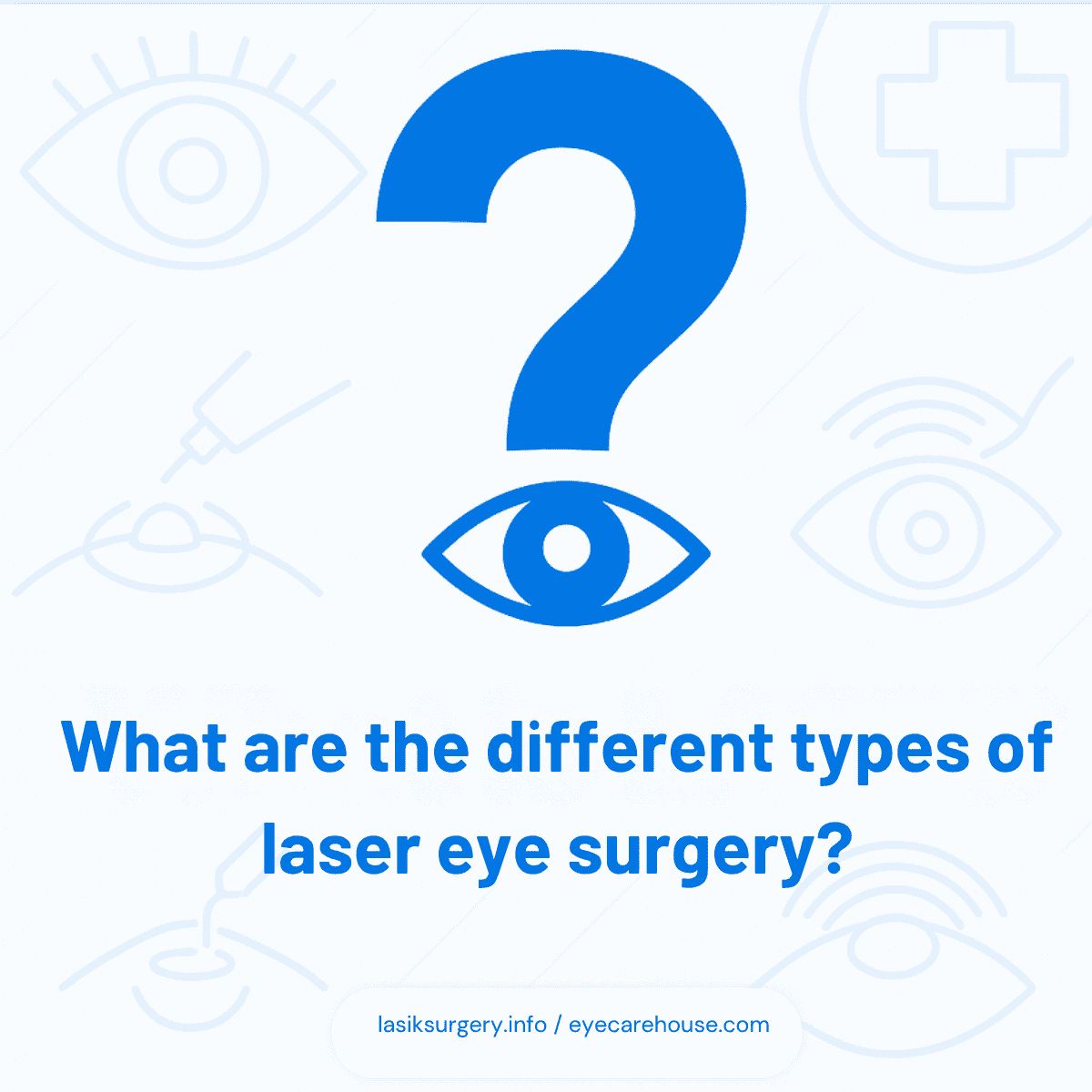
LASIK creates a corneal flap before reshaping the underlying tissue with a laser. Other types like PRK remove the epithelium, while SMILE uses a small incision without a flap. LASIK offers faster recovery but isn’t ideal for everyone.
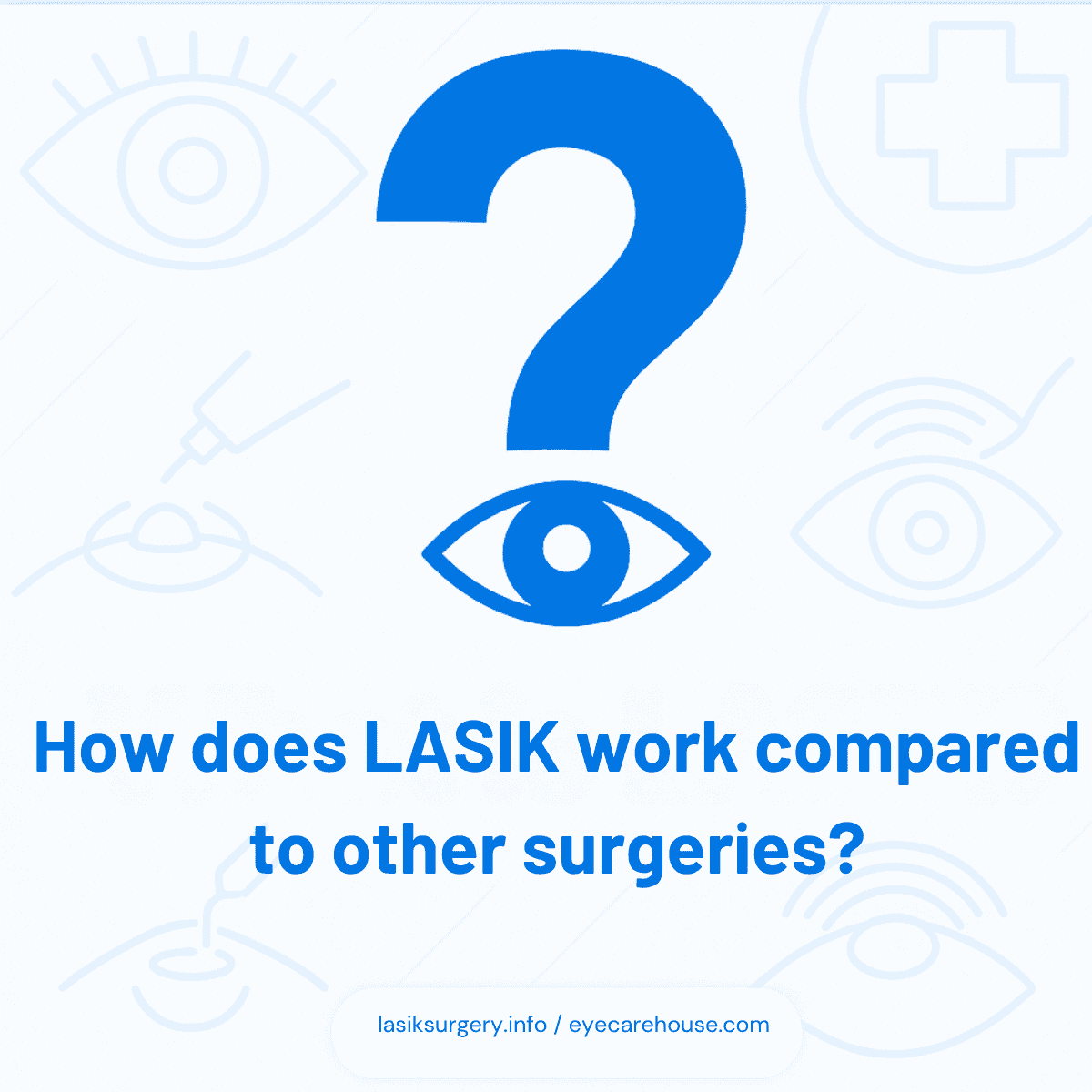
SMILE is considered minimally invasive and eliminates flap-related complications, which may reduce dry eye symptoms. While LASIK is more versatile, SMILE is a great option for treating myopia and astigmatism with fewer nerves affected.
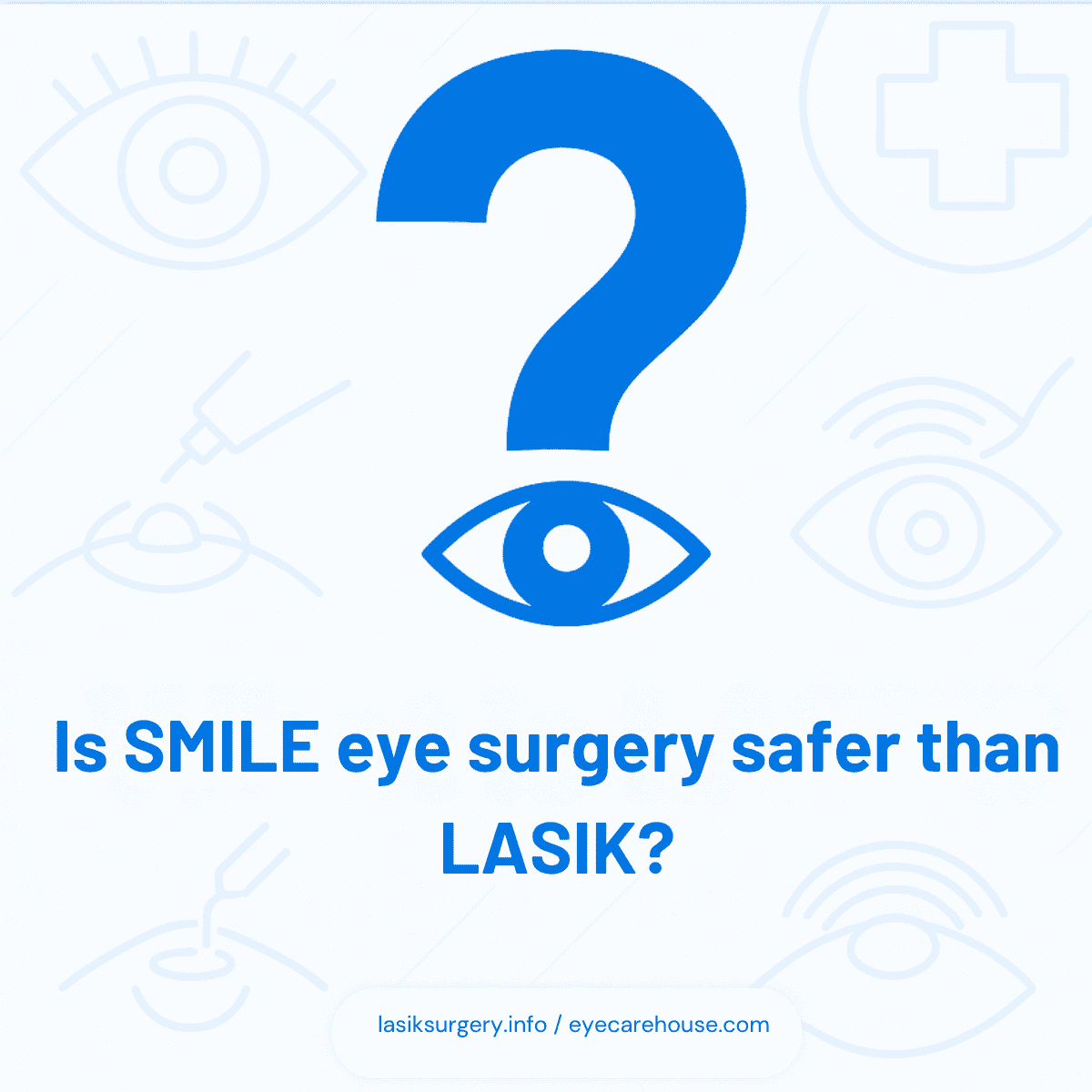
PRK is ideal for individuals with thin or irregular corneas, or those engaged in contact sports. Unlike LASIK, it doesn’t involve flap creation, making it more suitable for active lifestyles and unique corneal conditions.
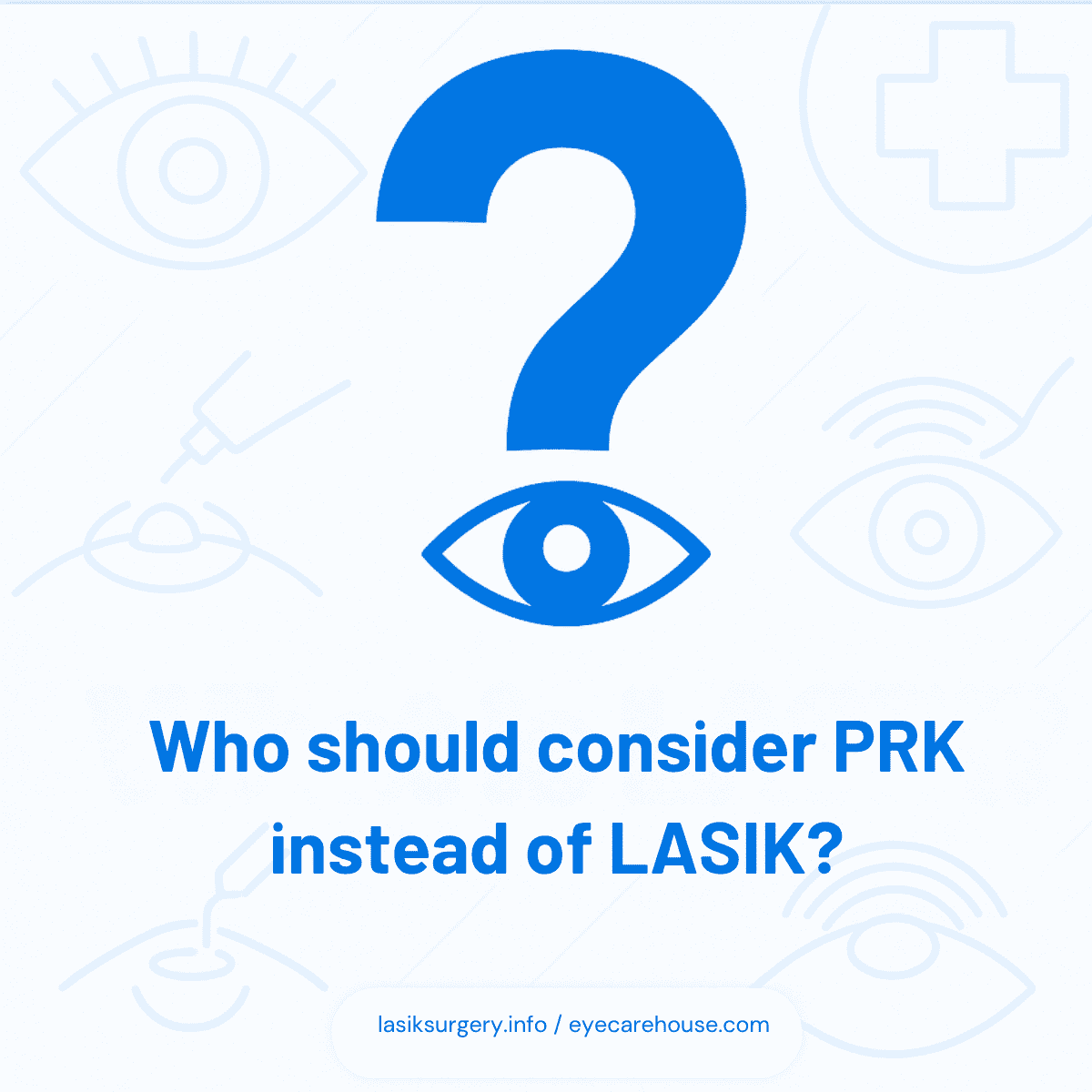
LASIK recovery is fastest, usually within 1–2 days. SMILE takes a few days, while PRK, LASEK, and Epi-LASIK may require up to several weeks due to surface healing. Patient healing varies by individual and procedure type.
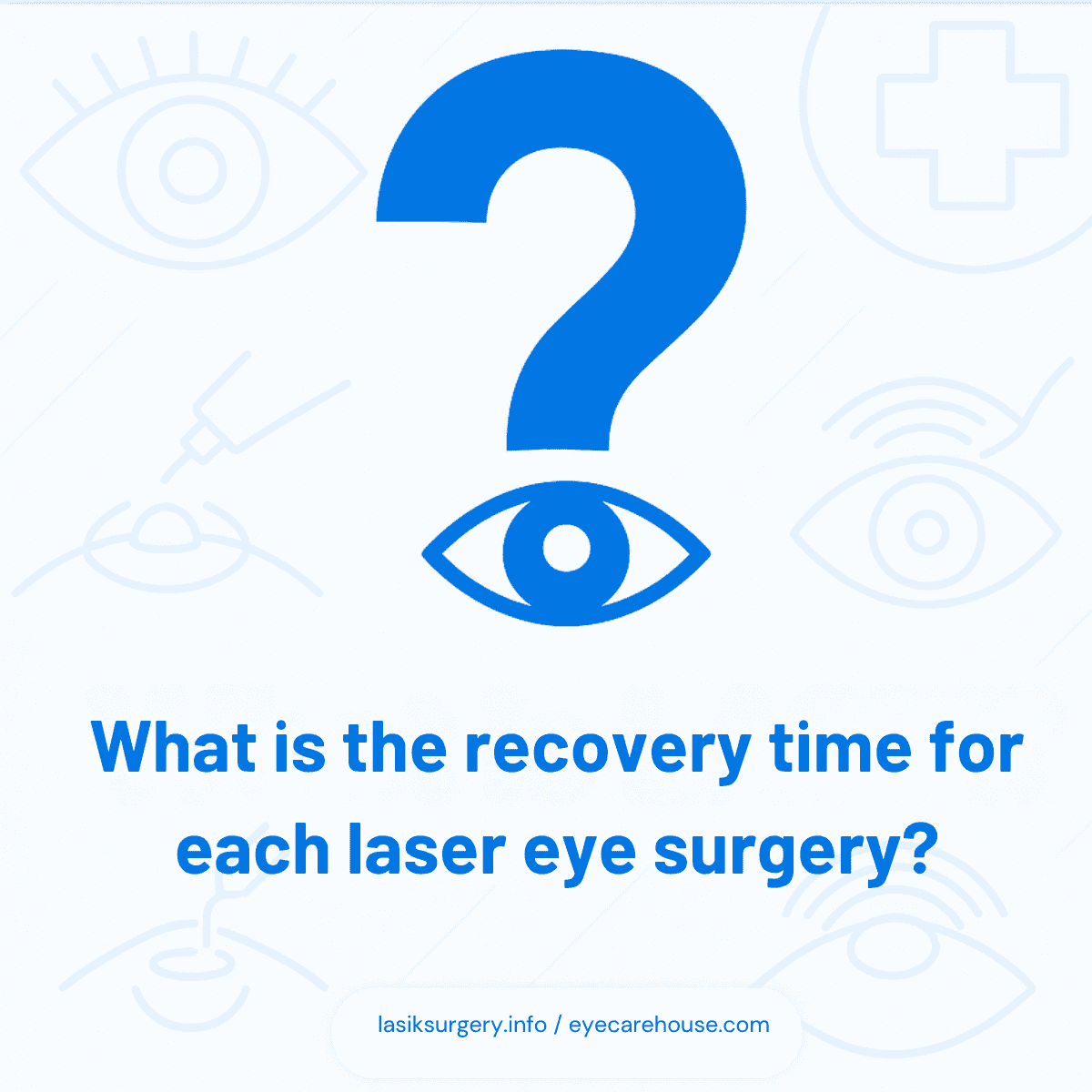
Most laser eye surgery types can correct nearsightedness, farsightedness, and astigmatism. SMILE is currently limited to myopia and astigmatism. Severe hyperopia or presbyopia may require alternatives like RLE or lens implants.
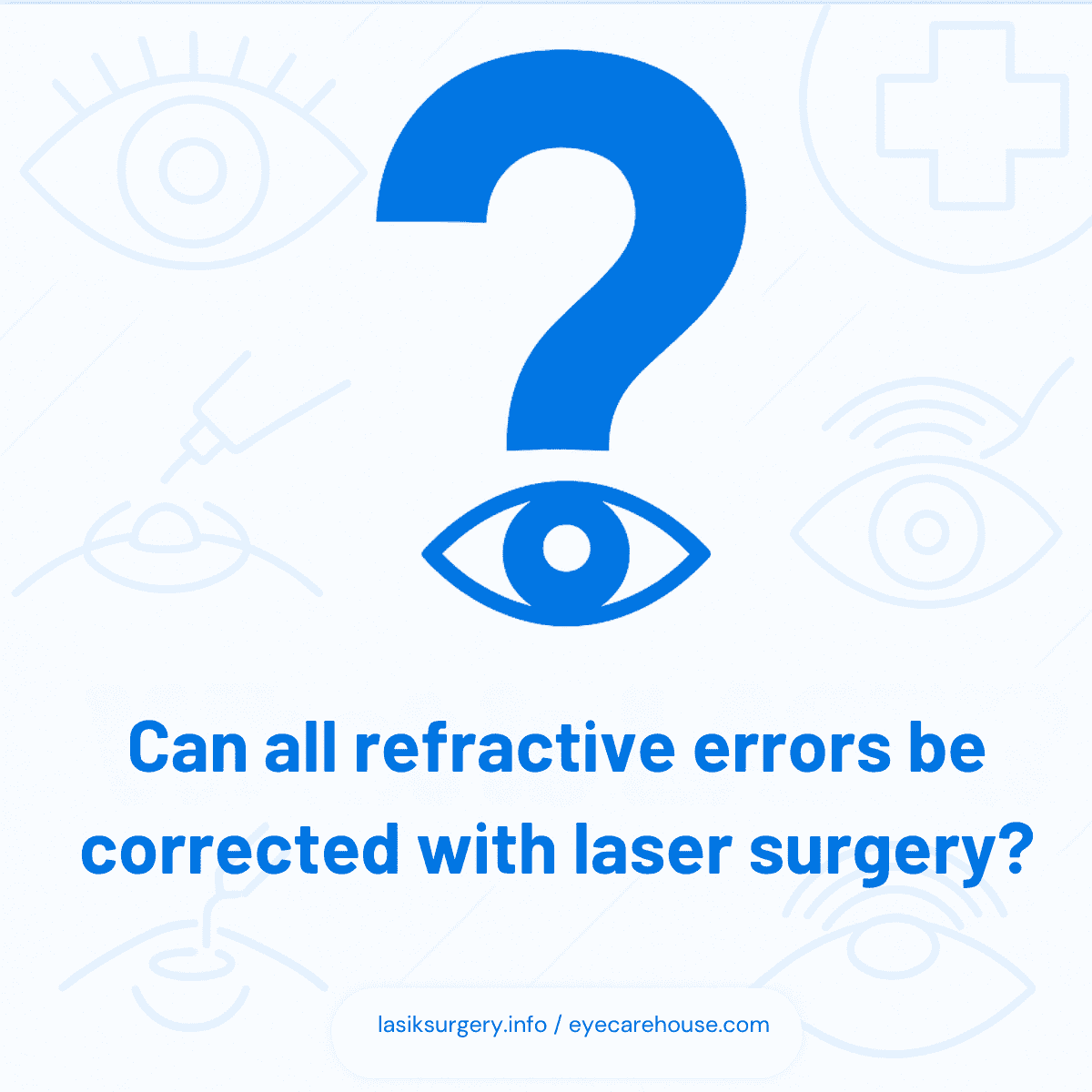
Laser eye surgery is generally painless due to numbing drops. Patients may feel slight pressure or discomfort during the procedure, especially in PRK or LASEK. Mild irritation is common during healing, but manageable with eye drops.
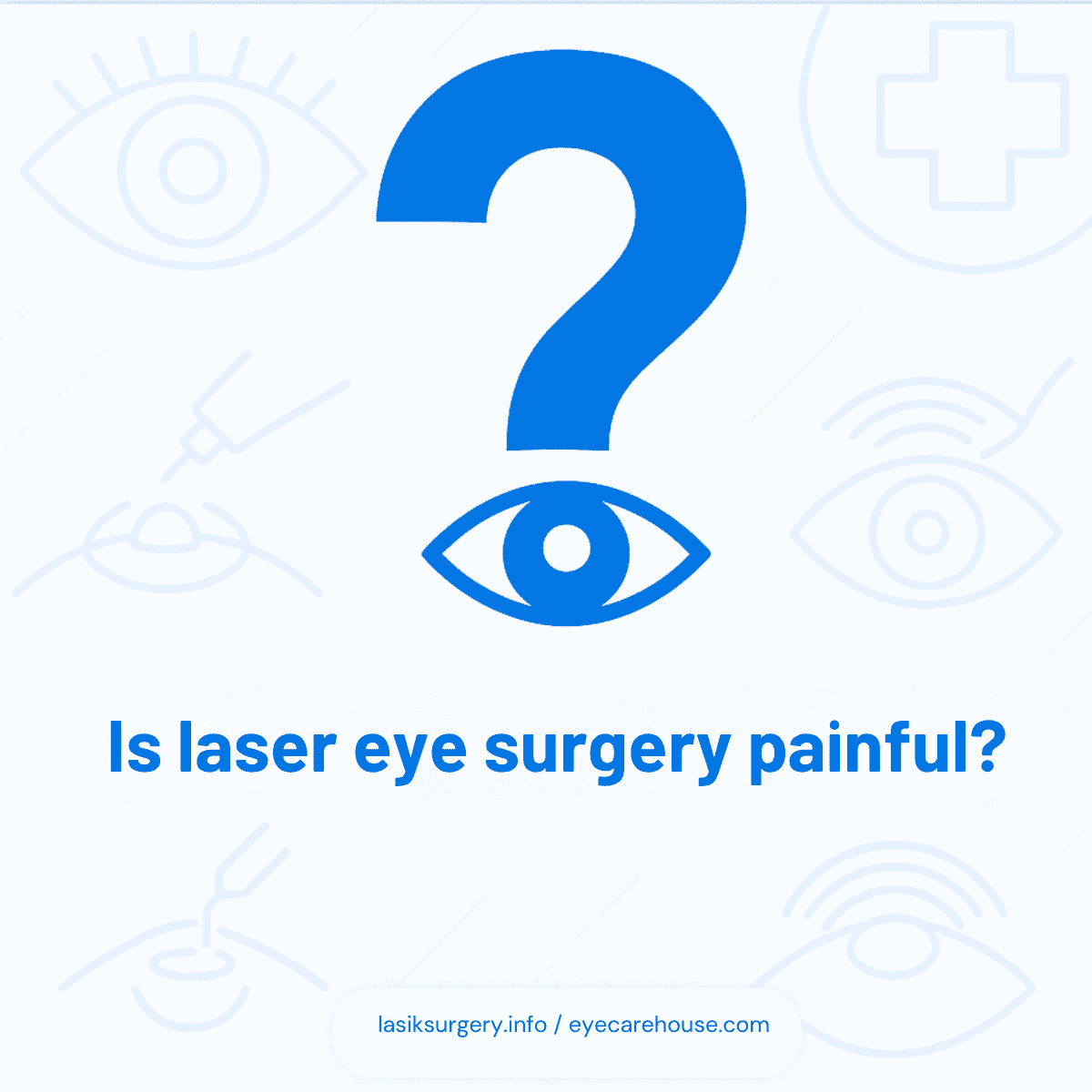
Yes, procedures like Refractive Lens Exchange (RLE) and Phakic Intraocular Lenses (pIOLs) are effective non-laser options. These involve implanting or replacing lenses and are useful for patients with very high prescriptions or thin corneas.
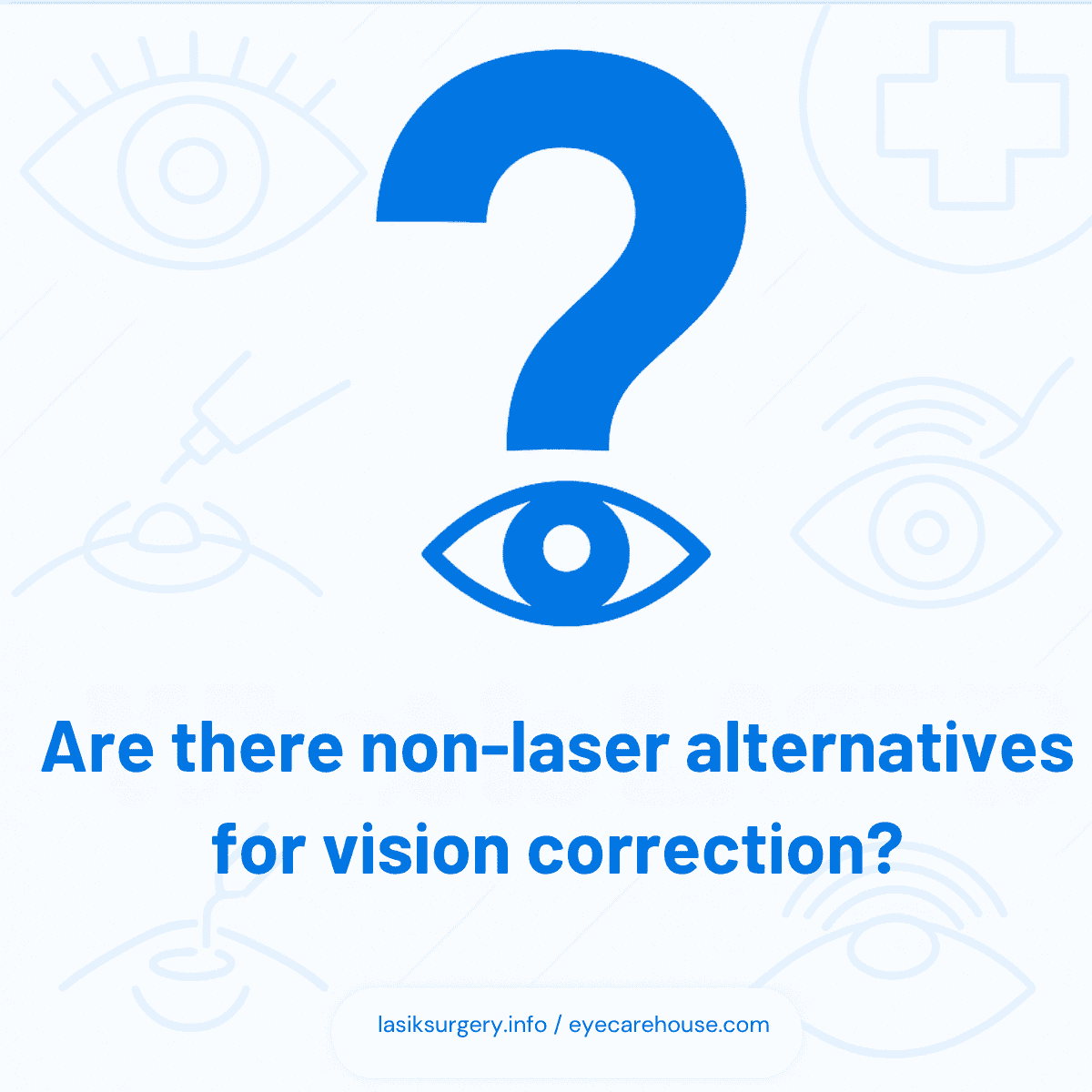
The results of laser eye surgery are long-lasting, though not immune to age-related changes like presbyopia. Some patients may need reading glasses later in life or a follow-up procedure to refine results.
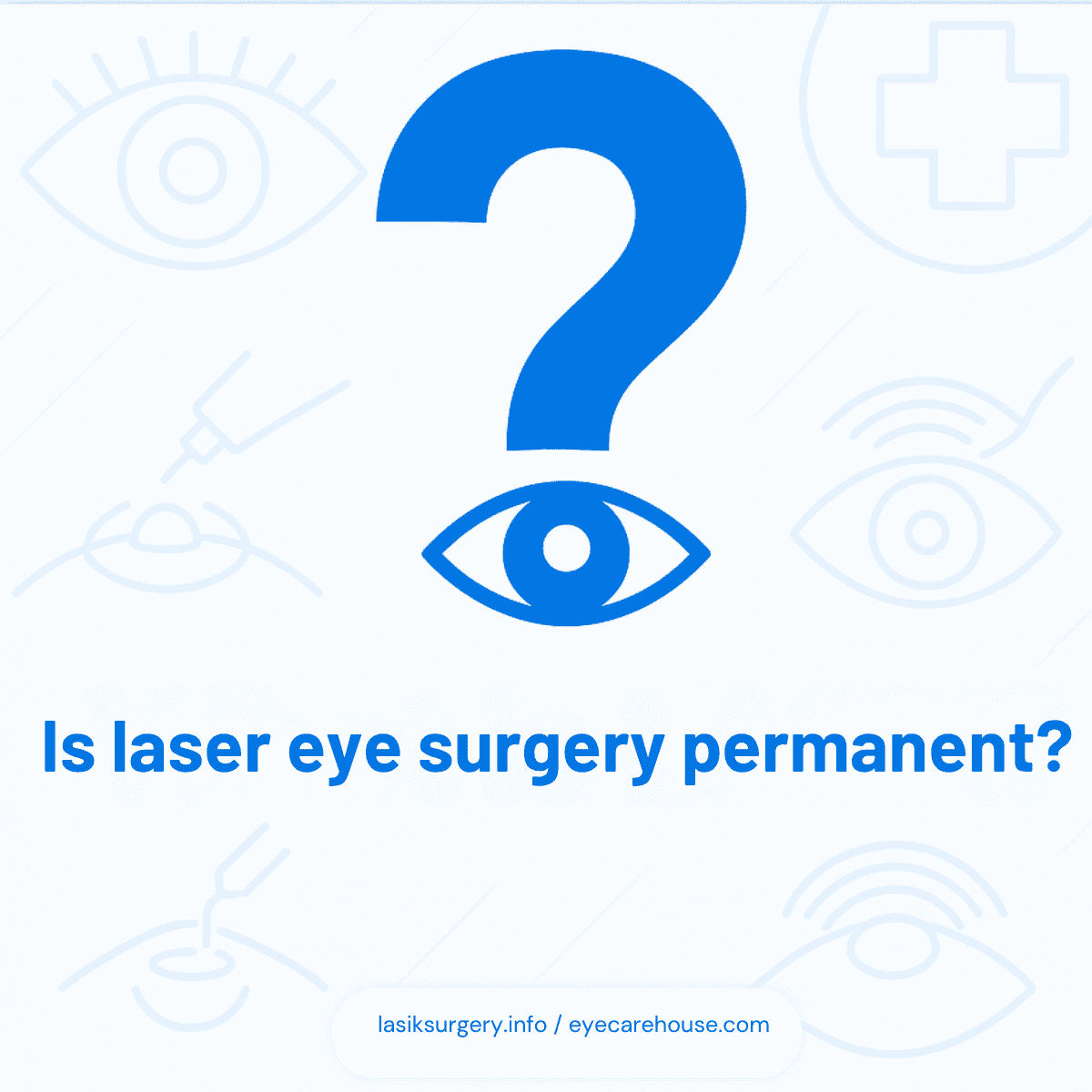
Risks include dry eyes, halos, glare, undercorrection, and infection. These are rare with modern techniques and careful screening. Most issues are temporary and treatable with follow-up care.
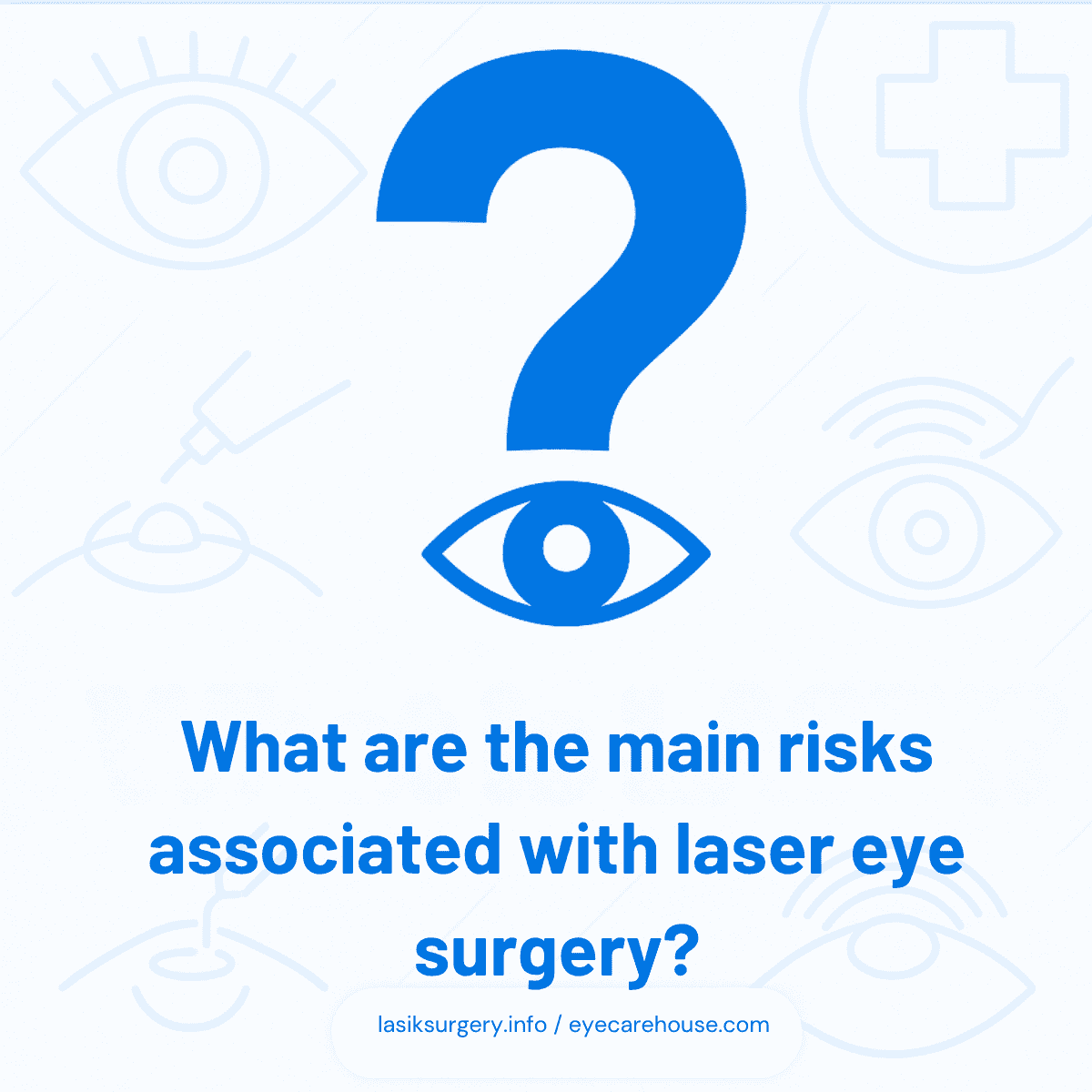
Choosing the right procedure depends on your prescription, corneal thickness, lifestyle, and age. An experienced eye surgeon will assess these factors and recommend the best match for your eyes and vision goals.
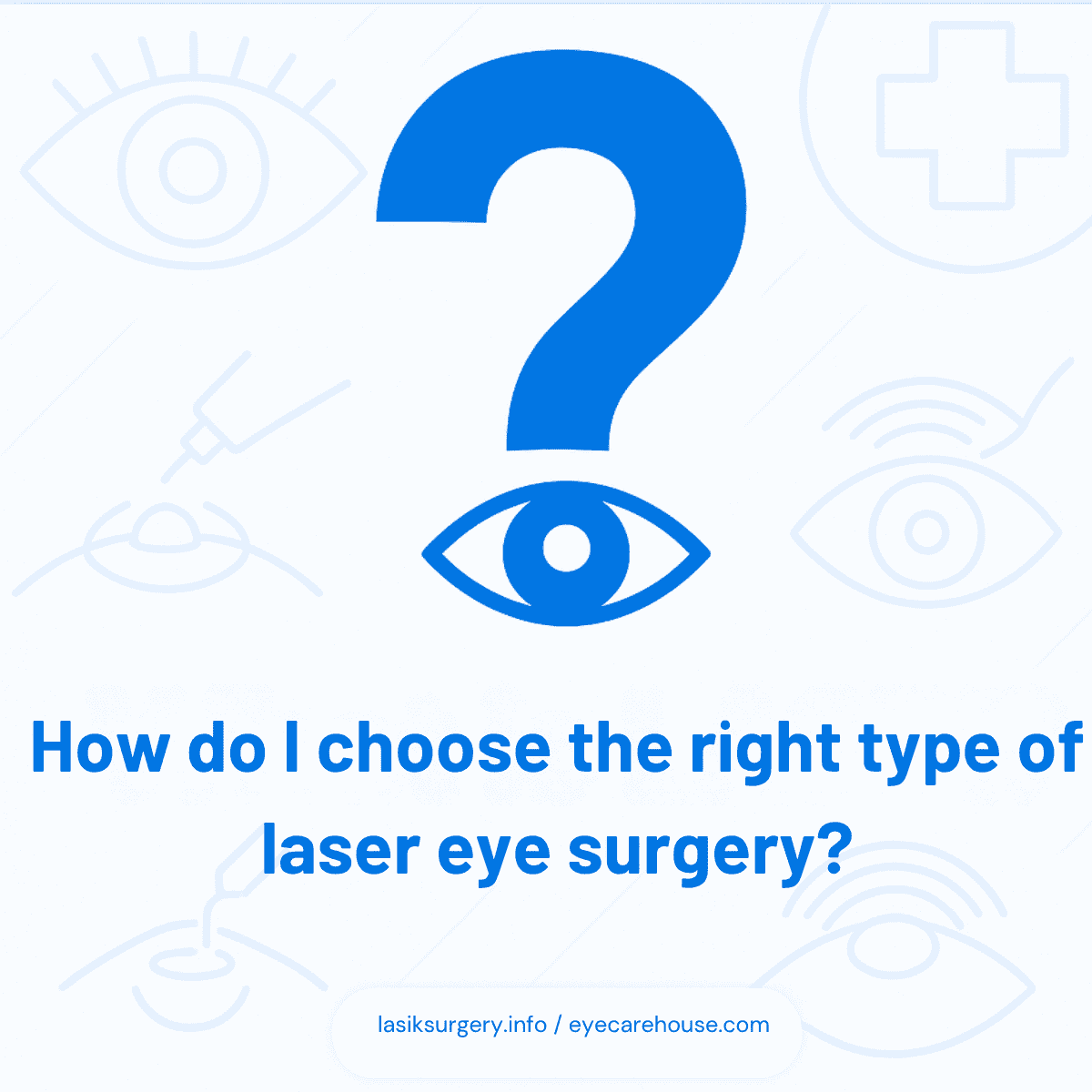
Both are surface procedures that don’t involve creating a flap like LASIK. LASEK uses alcohol to loosen the epithelial layer, while Epi-LASIK uses a blunt microkeratome. Healing time and discomfort are similar.
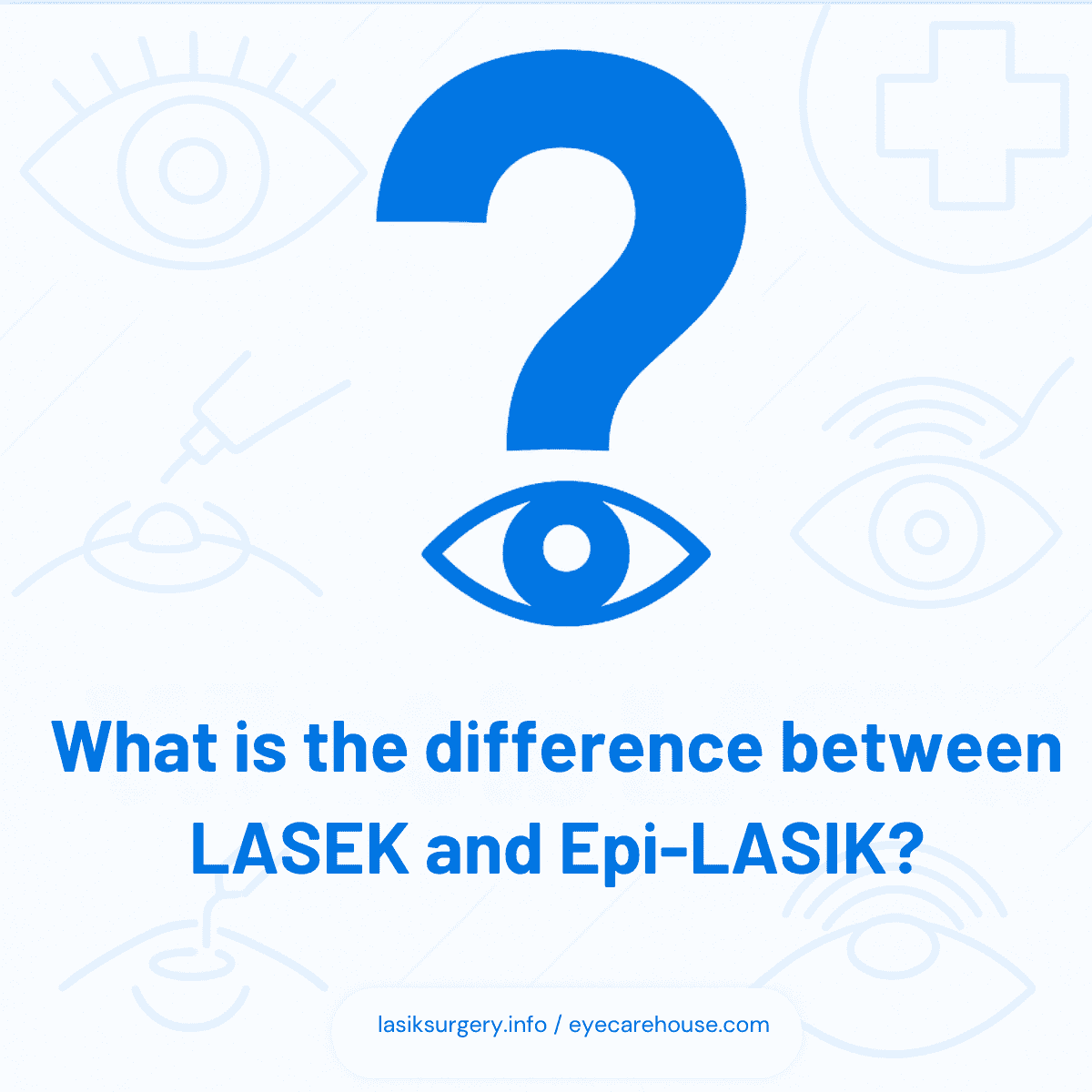
Yes, especially Refractive Lens Exchange (RLE), which replaces the natural lens with an artificial one. This option is effective for presbyopia and early cataracts, offering permanent correction.
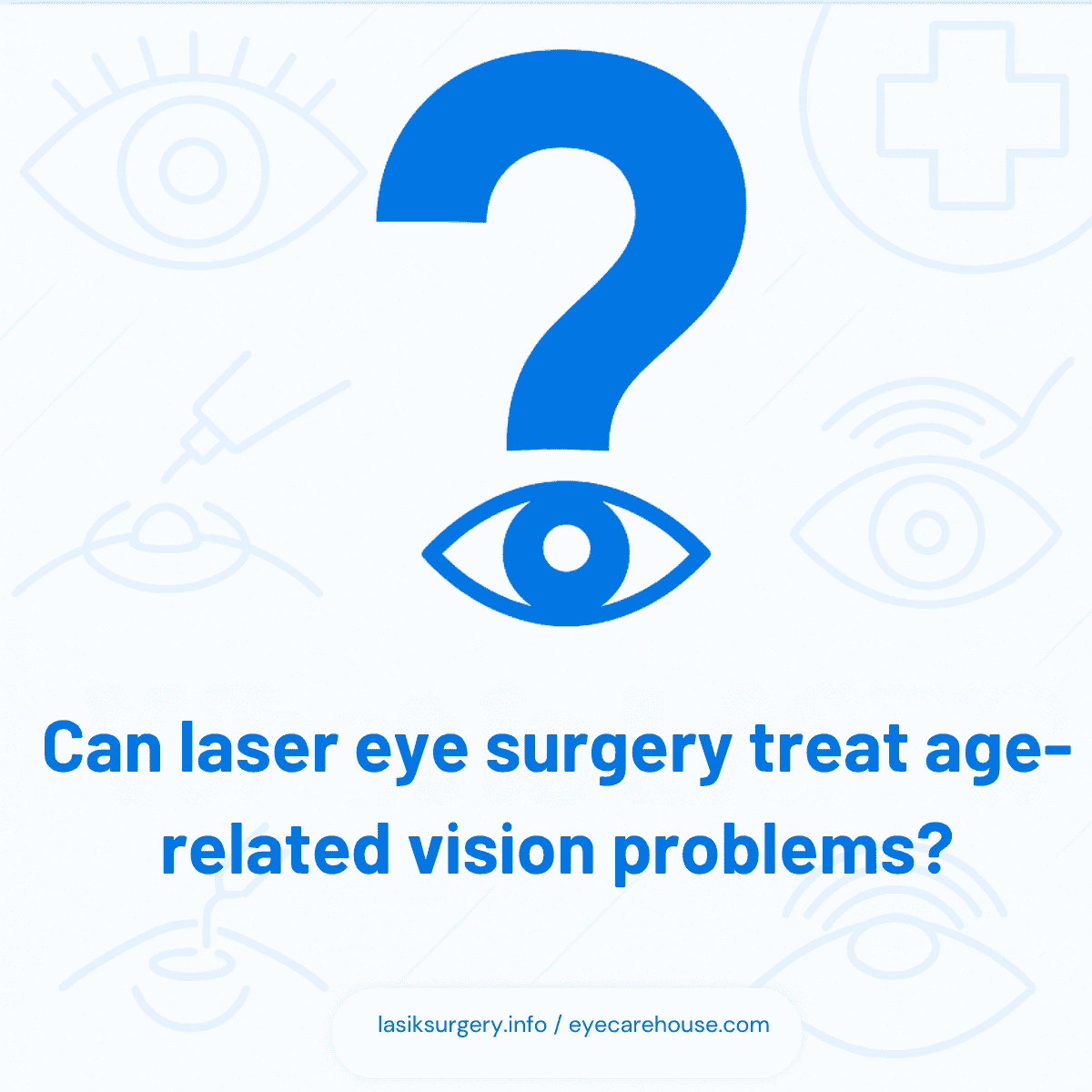
Yes, it’s a major factor. LASIK requires more corneal thickness to safely create a flap. Those with thinner corneas are often better suited for PRK, SMILE, or LASEK to avoid complications.

Enhancement procedures may be needed if vision changes or doesn’t stabilize fully. They are safe and involve minor corrections, often performed months or years after the initial surgery.
